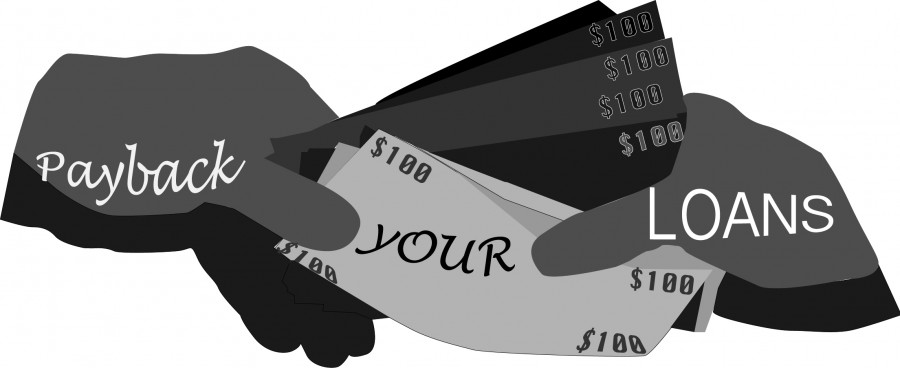How to Pay back Student Loans
Graphic by Ashlee Fields
January 26, 2015
As students work towards graduating at the end of May, many will be figuring out how to pay back student loans shortly after.
Students’ major federal loans are both subsidized and unsubsidized.
Unsubsidized loans don’t gain interest until after the student has graduated and have a grace period of six months before the borrower must start making payments; a subsidized loan accrues interest as soon as the student receives it.
These loans are both considered direct loans, which “are made through the William D. Ford Federal Direct Loan Program, for which eligible student and parents borrow directly from the U.S. Department of Education at participating schools,” according to Federal Student Aid, an office of the Department of Education.
Graduates have many options for how they can start to pay back the loans they accrued while in college.
The standard payment plan is the most basic plan that also yields the least amount of interest compared to other plans. This plan sets a fixed monthly payment plan with a maximum of 10 years to finish payments. It can be set at a minimum of $50 a month.
Graduates who might not want to pay as much at the outset of repayment can use the graduated repayment plan. This allows the graduate to pay less than what the standard plan would offer in the beginning, but every two years the monthly amount rises. This payment plan is completed in ten years or less but also has increased interest compared to the standard plan.
The Health Care and Education Reconciliation Act that passed in January of 2010 helped to design alternative payment plans and establish forgiveness programs that help graduates who need more time to repay their loans. This act enables graduates who have have made the equivalent of 20 years of payments to have the remaining amount forgiven, according to WhiteHouse.gov.
Other payment plans include the extended repayment plan, an income based repayment plan (IBR), an income contingent repayment plan, an income sensitive repayment plan, and a pay-as-you earn plan. These are plans that last 20 years or more and are calculated upon your adjusted gross income, family size and amount of loans accrued.
Based on these variables, the payment plans may require paying up to 10 or 15 percent of a graduates income divided into monthly payments.
Another option available is the consolidation of a student’s loans into one monthly payment instead of multiple payments to multiple lenders.
This is only available if the graduate has two or more federal loans; however, it gains more interest than paying each loan back separately and allows the borrower to make one payment each month rather than keeping track of multiple. With consolidation, the graduate can lose interest rate discounts, principal rebates or loan cancellation benefits, according to Federal Student Aid.
For more information on student loans and repayment, students and graduates can visit StudentAid.gov. More details are available including interest calculators, information on how to make payments and specifics on each repayment plan.










